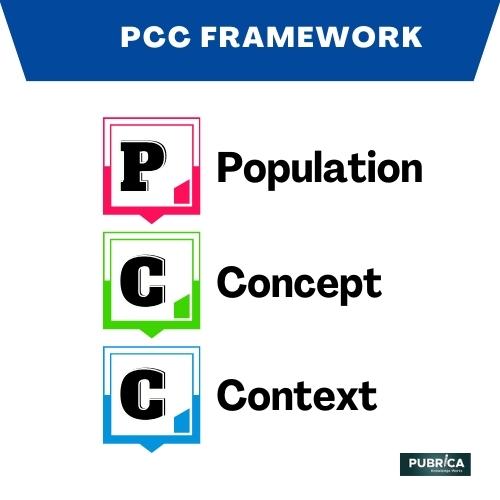PCC Research question framework
The PCC research question framework is a helpful tool for formulating research questions clearly and concisely. PCC stands for Population, Concept, and Context, which are the three key elements of a research question.
- Population: This refers to the group of individuals or entities on which the research question is focused. This can include characteristics such as age, gender, ethnicity, occupation, etc. For example, “What are young adults’ attitudes towards social media?”
- Concept: This refers to the main idea or variable that the research question is exploring. It is important to clearly define the concept being studied to ensure that the research is focused and relevant. For example, “How does parental involvement impact the academic achievement of high school students?”
- Context: This refers to the setting or environment in which the research question is situated. This can include geographic location, cultural norms, historical events, etc. For example, “What are the factors influencing the adoption of renewable energy in rural communities?”
Using the PCC framework can help researchers formulate research questions that are specific, relevant, and feasible to investigate. By clearly defining the population, concept, and context of the research question, researchers can also ensure that their study is focused and targeted towards their intended audience.
| PCC Element | Definition |
| Population | Individuals with cardiovascular disease |
| Concept | Social capital includes cognitive and structural components. Cardiovascular disease, including risk factors, incidence and outcomes |
| Context | Research publications within the last 10 years (2010-2020) and published in English |

References
Aboumatar, Hanan, and Peter Pronovost. “Commentary: Making Hospital Care Patient-Centered: The Three Patient Questions Framework.” American Journal of Medical Quality 28.1 (2013): 78-80.
